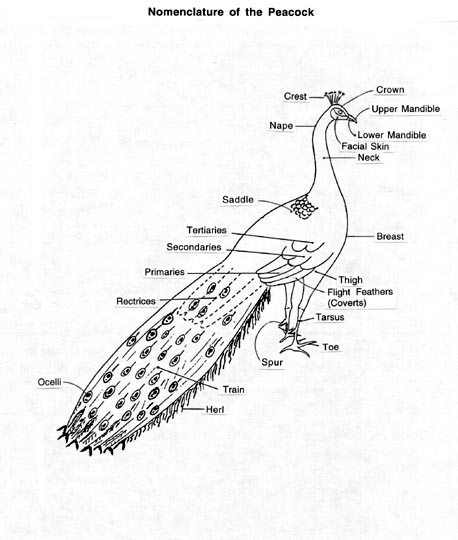1. Crest- a showy tuft on head.
2. Crown- top of head.
3. Herl- long string-like material on eye and sword feathers. Used to tie wet fly patterns.
4. Hybrid- an offspring of parents of different genotype of different breeds, varieties, or species, which must be related to produce fertile offspring.
5. Mandible- upper and lower segment of the bill.
6. Mutation- a relatively permanent change in hereditary material involving either a physical change in chromosome relations or a fundamental change in genes.
7. Nape- back of neck.
8. Ocelli- eyes.
9. Primaries- wing feathers mostly concealed under the secondary feathers.
10. Retrices- main tail feathers.
11. Saddle- the rear part of the back extending to the tail.
12. Secondaries- any of the quill feathers of the forearm of the wing.
13. Sickle- feathers which resemble a sword in shape. Lowest feathers on train when raised in display.
14. Spur- still sharp spine located on back of leg.
15. Smalt blue- deep blue.
16. Tarsus- the portion of leg between toes and thigh.
17. Tertiaries-small feathers covering wing.
18. Train- display feathers of the male consisting of sickle, fan, and ocelli feathers of varying lengths which molt near the end of mating season.
19.Vermiculated- worm like winding or barring.
20. Wild type- basic species, natural (Example: India Blue, Java Green).

